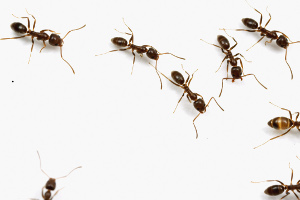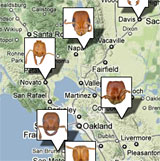For those of us fighting losing battles against them in our kitchens, ants are just ants. But the species responsible for the majority of those invasions has a name: the Argentine ant.
Argentine ants have had amazing success as an invasive species in the US. Their West Coast super colony numbers in the billions and spans from Mexico to Oregon. But aside from invading homes, they’ve had a dramatic effect on native ants and local ecosystems.
While many of us may not think ants are particularly important, ants hold a number of key ecological jobs, as I learned in this week’s story. They disperse seeds, aerate soil just like earthworms, and recycle nutrients just like nature’s garbage men (well, garbage women. Worker ants are actually female). For more on ants throughout the world, check out this QUEST TV story.


